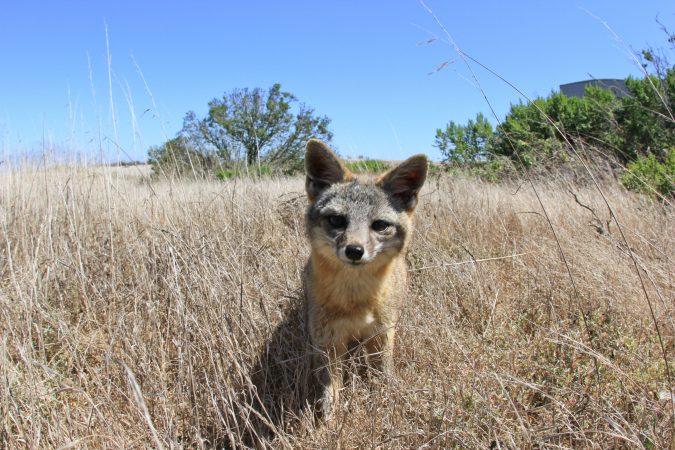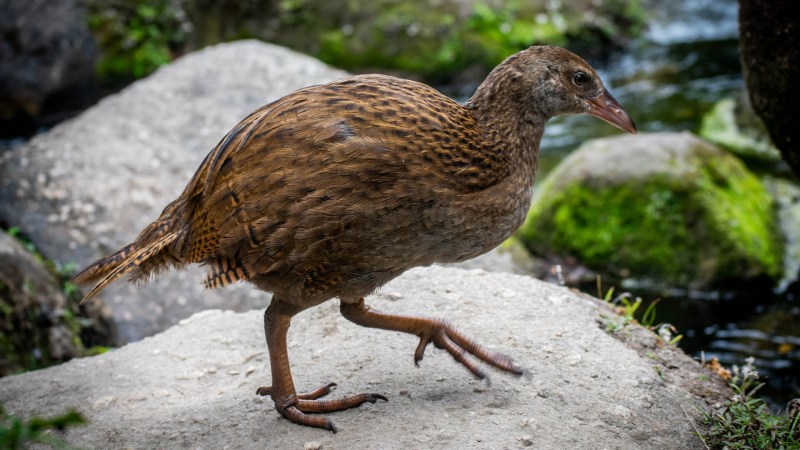

In 1918, a ship beached on Lord Howe Island. It brought rodents to the lush, crescent-moon-shaped volcanic remnant in the Tasman Sea for the very first time. Without any predators to hold them back, the rats decimated native species of insects and birds.
However, all was not lost. Last week, researchers announced that an insect species thought to be extinct—the Lord Howe stick insect—had been spotted on a nearby island. But it would be pointless to reintroduce the large, lobster-like Phasmatodea to Lord Howe in its current state. The rodents munch on these insects like candy, according to Alexander Mikheyev, an ecology and evolution professor at Okinawa Institute for Science and Technology. “They are about the size of a sausage and largely defenseless,” he says. “It’s the best rat treat you could imagine.” Other species, like the wood-eating cockroach, cling to existence on Lord Howe’s sheer cliffs. Mice and rats also devour bird eggs. While the invasive pests remain, introducing the Lord Howe stick insect and other native species back on the island will be impossible.
So the Lord Howe Island Board has made a plan for extermination. Right now, the island just uses rodent control where the small human population lives, which only covers about 15 percent of the land area. Next winter—that’s around June in Australia—they plan to use helicopters to drop cereal filled with the poison Brodifacoum all over the place.
This substance prevents blood clotting, which means that as the rodents continue to eat it they become more and more susceptible to death by internal bleeding. Rats often develop tolerance to poisons, which is why New York City uses a combination of different rodenticides, dry ice, birth control, proper sanitation techniques and other innovations to attempt to control the rat population. When the board attempts their rodenticide blitzkrieg, they will have to kill all of the rats on the island in one go. It only takes a couple of animals that are less susceptible to Brodifacoum to breed a new army of rats—ones that are even harder to kill.
Other islands have attempted total rat eradication, with about an 80-percent success rate. There have been over 700 success stories all over the world, and a few failures. The U. S. Fish and Wildlife Service wiped out one population on an island in Alaska—formerly known as Rat Island—but also killed many birds, which ate the rat poison. The bald eagle population went from 24 birds before eradication, to just two a year afterward. Five years later they’ve bounced back to some extent, with 10 individuals living on the island. And many other birds are beginning to flourish. In order to prevent avian populations from suffering, the Lord Howe Island board is planning to gather up vulnerable species like the Lord Howe woodhen and contain them in protected areas until the threat from the poison is over.
While the logistics of removing an entire species of small, adaptable mammals is hard, and garnering public support of widespread poison is also difficult, raising funding is yet another challenge. In order to estimate the costs and benefits of rodent eradication, the Lord Howe Island board hired a special firm that specializes in quantifying more amorphous benefits, like biodiversity and recreation. “The point is that if we don’t try to put some sort of value on them, the value that may be ascribed to them will be zero,” says Robert Gillespie. In order to estimate the costs, Gillespie relied on surveys in which scientists polled Australians on how much they are willing to pay to save endangered species. He said Australians have a fairly high willingness to pay for continued island diversity. The Lord Howe Island board has set aside about nine million in Australian dollars or about seven million USD, for the project—mainly from grants given by the Australian government.
Many Lord Howe species have already gone extinct forever, including the white-throated pigeon, red-crowned parakeet, Lord Howe starling and Lord Howe boobook. The reefs are at risk from rising temperatures due to global climate change. However, the rodent eradication project presents an opportunity to save some native species and preserve the Lord Howe ecosystem, at least for now. “Once something is lost, it is usually lost to us forever,” says Mikheyev. “The Lord Howe stick insect is a rare second chance to fix something we destroyed.”















